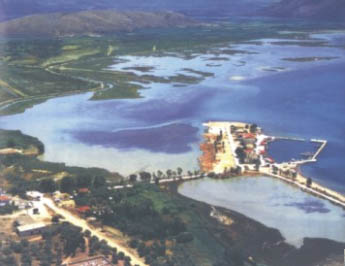|
There is no tourist activity that does not rely on
environmental resources in some way. For example, natural
resources are used to supply tourists with heat, power,
food, sanitation and drinking water. The environment
is called upon to absorb the waste that is generated
(e.g. household waste dumps). Tourism often neglects
this resource dependency. The pressures, exerted as
a result of tourism, may be so great that the activity
can become unsustainable and leads to a decline of the
resources in the long-term.
Coastal and sea resources are very important world-wide
for tourism. Coastal tourist developments embrace both
water and land but often cover a surprisingly narrow
area. Travelling only a few miles inland from such well
know tourist centres as the Riviera in France can bring
you into areas virtually untouched by tourism. The infrastructure
needed to support the narrow tourist zone, can extend
over a far wider region. This involves services such
as water supplies, road and rail access, airports and
housing for staff and others. Tourism can be very concentrated
in terms of location, but its effects and influence
can extend over a much wider region.
|
Example
Epiros, Greece: footpaths which connect the coastal
area with places inland can diminish the pressure on
the coast
The Epirus region is situated in north-western Greece
and is rich in natural and cultural resources. The man
made environment includes traditional villages and monuments
from all the major historical periods. In line with
an EU ICZM Demonstration Project, old footpaths, which
connect the coastal area with places inland were restored
in order to present an alternative activity to visitors
of the area. Most of the tourists are currently focused
on sea activities. Through the footpaths tourists could
be diffused towards the mainland and this relieves the
coastline. The first footpath can be found near Parga,
a traditional coastal town; it starts from the magnificent
beach of Valtos and stretches along olive groves, abandoned
watermills and streams until it reaches a relatively
well-preserved castle and the hill of a small village.
The second footpath is located near Sayada, a coastal
community very close to an important wetland and the
Delta of Kalamas River. Tourists following this path
have the possibility to admire a splendid panoramic
view of the delta from the specially designed kiosk
and to explore the village with the traditional stone
buildings at the end of their walking excursion (Further
information: Barbara Tzialla, Region of Epirus - Department
of Environment and Spatial Planning, Greece and ipirpeho@otenet.gr).

The coastal area in Sayada (Epiros, Greece). Photo:
Region of Epirus - Department of Environment and Spatial
Planning
|